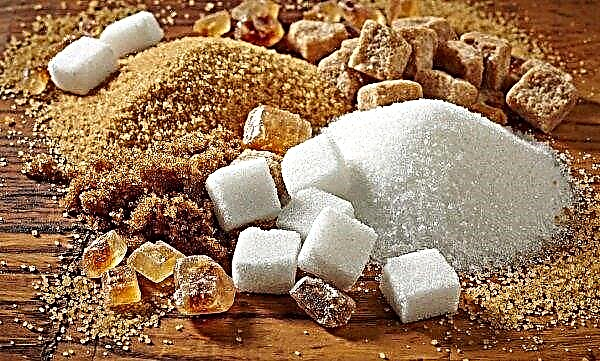In the summer, many people want to stay more in the fresh air, and often this requires a place that is impervious to rain and wind. An excellent solution in this case would be a veranda, gazebo or terrace with a polycarbonate roof. This article discusses the main points that should be considered when choosing the type of material for the roof, and its independent installation.
Types of Polycarbonate Roofs
Using durable and warm polycarbonate, which transmits sunlight, you can create not only a roof, but also the walls of the room. Looking at such a design, one might get the impression that it is too fragile, however, in terms of strength, this thermoplastic is not inferior even to impact-resistant plastic. At the same time, being inside, people do not feel like in a confined space, like ordinary rooms.

The surface of the material used in the form of a roof may be straight, having bends, or broken. From it, you can easily make an arch or install a more complicated configuration. It should be noted that even a completely flat roof surface should have a slight slope (at least 5 degrees). In shape, it can be single, gable or arched.
In order to thoroughly fix the horizontal parts, it is better to use wood or steel (baguette contour profiles). In this case, one of the edges should be based on the supporting wall of the building, the other should consist of beams arranged vertically (in this case it is also better to use either metal or wood). It should be noted that if the frame is heavy, then for its support it is better to choose strong pillars (brick or reinforced concrete is good), arranged on a waterproofing foundation (a mixture of sand and gravel).
Polycarbonate Selection for the Veranda and Terrace
When choosing a polycarbonate for a roof, you should know that today it exists in two forms: monolithic and cellular, or cellular. Monolithic is called so because it represents a single whole structure without any inclusions and voids. Based on this, monolith panels have the greatest strength among other polymer building products.
Cellular Polycarbonate - This is a design of two outer sheets, which form a cellular configuration inside due to the large number of partitions closely pressed against each other. According to its general technical parameters and quality, it differs significantly from the first type, however, in construction, as practice shows, it is used more often. The choice must be approached responsibly, knowing all the advantages and disadvantages of each of the varieties, which are discussed below.
Which is better: cellular or monolithic
- The advantages of a monolithic polymer:
- withstands intense loads and atmospheric differences;
- has a strong surface that does not crack in frost and does not melt under the hot sun;
- stronger than organic glass, but at the same time it transmits sunlight well;
- has a scattering effect of the coating, gently distributes heat and the rays of the sun;
- not prone to ignition and release of harmful substances when heated;
- It is characterized by high flexibility of structural elements, as well as the ability to easily create an arch and similar structures.

The only drawback of monolithic panels is that if you want to use complex parts in form, it will be difficult to do it yourself - it is best to order them at the factory.
- Advantages of cellular polymers:
- insignificant weight makes it possible to use light and simple supports, and this, first of all, - saves finances and reduces the time spent on installation;
- for installation purposes it can be placed on an aluminum profile;
- due to the bearing capacity of the material, ready to withstand a meter-thick snow layer, a roof is often made of it;
- in terms of strength, cellular polymers are significantly inferior to superiority to competitors - monolithic, but in many ways surpass other widely known roofing;
- the excellent plasticity of the material makes it easy to bend or compress polycarbonate products that are not suitable for frame cells (while they can not be heated);
- the ability to transmit light in a cellular polymer is 10% less than that of a monolithic one (but this is already a rather high indicator);
- measured and soft lighting due to the diffusion of sunlight in the comb;
- fireproof panels, and the absence of toxins in contact with open flame;
- excellent adaptation to high and low temperature indicators without the presence of any deformation;
- thermal insulation of the roof due to the property of voids to keep the temperature.
Important! An arch is formed by bending metal or aluminum parts of the frame. But this cannot be done without previously applied incisions on the inside of the structure with a recommended gap of 10-15 cm between them.
- The disadvantages of mesh panels:
- low resistance to ultraviolet, which is able to corrode the outer base;
- the top layer of material prone to scratches and other damage, and therefore the inability to use brushes and scrapers with metal particles when cleaning;
- destruction of external jumpers in contact with detergents due to exposure to chemically hazardous elements;
- with a damaged coating, garbage easily enters the cells, and it is very difficult to clean them, so the appearance of the transparent structure slightly deteriorates.
After a detailed study of the characteristics of both types of polymer, it can be concluded that both panels are equally well suited for the construction of the roof of a veranda or terrace. These types of rooms do not need a high-strength roof, however, in the case of a location under a massive tree with spreading branches, it is optimal to use a more resistant monolith. Such coverage will be more expensive, but you will be guaranteed reliable protection of the building from damage.

It should also be noted that thermal, technical and sound characteristics directly depend on the thickness of the material. For example, the thinner the panel, the easier it is to bend, and the thicker the cellular polymer, the warmer and quieter it will be in the room. Moreover, if the main design criterion is the reliability and strength of the material, it is recommended to use monolithic sheets. The thickness of the monolithic polymer varies from 2–12 cm with a weight of 2.5 to 14.5 kg per 1 m, cell panels weighing 800 g to 2.8 kg 1 m are characterized by the same layer from 4 to 16 cm.
Color selection
When choosing the type of polymer roof, it is also necessary to take into account the moment of decor and style: transparent roofs are more suitable for the classics, while colored roofs look brighter and will be a real highlight of the garden or cottage. But even colored mounting components can be translucent or fully translucent. The polymers from which the constituent elements are made give them the opportunity to take any form. The stronger the material, the darker the color.
Design and drawings
To avoid common mistakes, you first need to think through all the technical features and create a detailed plan of action for the independent manufacture of a polycarbonate roof. For easy and accurate calculation, visualization of the project is necessary (drawings or diagrams indicating sizes, locations of fastenings, etc., etc.).
Necessary materials and tools
To cut the honeycomb material you will need a sharp knife, but when working with the monolith, an electric jigsaw or a circular saw will come in handy. In both cases, it is still worth stocking up with a screwdriver or a screwdriver, a drill, a level, a tape measure and a ladder. The necessary holes in this case are best created with metal drills.

As you know, the crate is the main structure for installing roofing material. You always need to start with the creation of supports, frame and lathing. For complex and intricate structures, huge metal beams, poles (made of wood, reinforced concrete, brick) are used; it is recommended to install them on a closed foundation, for simpler and lighter - aluminum profile, or steel supports. At the same time, to reliably fix the profile, it needs to be immured.
DIY step-by-step construction instructions
After the basic information about polycarbonate, its types, as well as the advantages and disadvantages of each of them, becomes known, you can safely proceed to the independent installation of the roof of the veranda or terrace on your site. Doing it yourself is quite possible even without special equipment, but only if you follow certain recommendations.
Did you know? Polycarbonate is often used in optics due to its light transmission properties: lenses made of this material are 10 times stronger than other inorganic compounds and 200 times stronger than glass. For this reason, polycarbonate is called "plastic metal", and glasses from it are considered the safest in the world in terms of injury.
Foundation building
The instruction for the construction of a strip foundation consists of the following steps:
- First you need to dig a trench around the perimeter of a potential veranda measuring 40 cm by 40 cm.
- Next, fill the bottom with broken brick or rubble.
- Then you need to install the plank formwork, which is pre-coated inside with polyethylene or roofing material.
- It is necessary to create a reinforcing cage in the form of a polyhedron with six faces using metal rods.
- To prevent parts of the frame protruding outward, it is recommended to use plastic racks.
- Where the supports are located, you need to install the vertical rods so that they protrude above the reinforcement by about half a meter.
- Then fill the formwork with prepared concrete (with the obligatory packaging of metal channels, corners, similar elements for laying) and leave to solidify for a month, no less.

The construction of supports and frame
The next step is the formation of a brick foot of the building using the double-row masonry method with dressing of joints. At the same time, it is worth making sure that the protruding rods are closed with a concrete foundation, in size combined with the supports. In the case of installing wooden posts, it is necessary to make holes for the rods in them, disinfecting them with antiseptic agents, and lubricate the joint areas with waterproofing mastic (to prevent moisture from entering the wood and causing a rotting process).
Important! For a lighter weight crate, contour polycarbonate profiles are used, which are usually sold with a coating in a single set.
So, the further algorithm of actions is as follows:
- On top of the posts, beams should be fixed and the frame mounted on them in the form of a rafter structure from beams or a metal profile structure.
- The roof supporting system (inclined rafter legs, inclined struts and vertical struts) is installed in increments uniform with the width of the polycarbonate panel.
- The main load is assumed by oblique beams directed from the structure: horizontal bars are fixed in the middle of them, which gives the structure stability.
- Self-tapping screws and steel corners will help to connect the parts, and it is recommended to mount the rafters to the wall of the house with the support of anchors. Steel or aluminum frame elements hold bolts together perfectly.

Roof installation
The process of installing the roof is simple, but requires patience and care. The width and length of the roof are extremely rarely equal to the size of the panels. To lay out the extreme rows, they most likely will have to be cut off.
Did you know? The world's largest roof covers the Ferrari theme car park in the United Arab Emirates (on Yas Island in Abu Dhabi). About 231,000 m were involved in the arrangement of the roof and facade² metal. This area is equal to the size of fifty football fields.
Here's what the skin technology looks like:
- The panel must be fixed on a flat clean surface and, according to the marked markup, cut off the excess part (it is optimal to do this on a ruler, bar or board).
- In order not to scratch or otherwise damage the polycarbonate, the underside of the packaging film can be removed during installation, and the top - only after completion of all installation work.
- Panel elements are placed along the slope of the crate so that liquid vapors from internal cells can drain.
- During installation, the film protecting the edges of the panel is wrapped 10 cm, while simultaneously attaching a self-adhesive tape on the sides.
- The unifying profile, like the system kit, is fixed on the fixing screws.
- Then a polymer sheet is placed in it (in the end-face position).
- On the outside, a special mesh film is attached to the polymer web and tightly closed with an end profile.
- The bottom is mounted on self-tapping screws, and the structure is pressed by the cover (automatically snapping into place). After that, the film can already be removed.
- The plinth on the ceiling can be either plastic (like polycarbonate), metal, or wood. Initially, the guiding parts of the ceiling baguette are attached, then the connecting elements (with observance of the depth of the grooves of at least 2 cm).
- Further installation is done according to the above elements: first, holes are formed, sealant (or other means with sealing properties) is necessarily placed in the grooves, and then polycarbonate sheets (with holes made earlier) are inserted, the coating is fixed with screws.

Polycarbonate Roof Care
The polycarbonate plastic surface does not require special care, it is enough to follow some simple recommendations:
- For cleaning, use plain water, a soft sponge or a piece of cloth;
- Do not use abrasive products, alkaline solutions, alcohol and aldehydes;
- It is not recommended to wash with detergents;
- to preserve the upper layer from ultraviolet radiation, it is necessary to avoid exposure to sharp objects.
With proper care, such a roof will last from 10 to 20 years.
Advantages and disadvantages of polycarbonate for the roof
To understand whether the right decision will be the choice of the substance in question for the roof of a terrace, porch or gazebo, you should know about the pros and cons of its use.
- Benefits:
- high level of resistance to sun exposure;
- a light weight;
- savings on insulation and heating;
- flexibility and durability;
- sound insulation;
- exposure to medium-sized precipitation (snow), hardwood.
- Disadvantages:
- poor resistance to abnormal natural phenomena and difficult weather conditions;
- Short-term with improper installation and maintenance.
Thus, a polycarbonate roof is a practical, simple and low-cost solution that will provide you with reliable protection, warmth and comfort, of course, with proper installation and proper care. And using the variety of polycarbonate offered by today's market, anyone can realize even the most intricate design ideas and make their home a real work of art.












